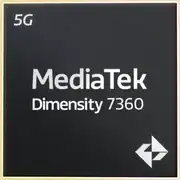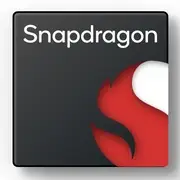MediaTek Dimensity 7360 vs Qualcomm Snapdragon 7s Gen 3
SoC Comparison Result
MediaTek Dimensity 7360 vs Qualcomm Snapdragon 7s Gen 3
Bottom line. Snapdragon 7s Gen 3 is faster in single-core CPU and most GPU scenarios, while Dimensity 7360 focuses on power efficiency, modern connectivity (Wi-Fi 6E, BT 5.4), and stable mid-tier performance. For gaming and longer software support the 7s Gen 3 is usually the better bet; for everyday tasks with an emphasis on battery life the 7360.
Architecture and graphics
-
Dimensity 7360: 8-core CPU - 4× Cortex-A78 (up to 2.5 GHz) + 4× Cortex-A55; 4-nm class. GPU Mali-G615 MC2.
-
Snapdragon 7s Gen 3: 8-core Kryo - 1× Kryo Prime (up to 2.5 GHz) + 3× Kryo Gold (up to 2.4 GHz) + 4× Kryo Silver (up to 1.8 GHz); 4 nm. GPU Adreno 810.
Mapping: Kryo Prime/Gold correspond to Cortex-A720 (ARMv9), Kryo Silver to Cortex-A520. This is a newer generation than A78/A55 in the 7360, hence better single-thread and rendering performance.
Connectivity, cameras, multimedia
-
Dimensity 7360: 5G Rel-16 with 3CC-CA (downlink up to 3.27 Gb/s), Wi-Fi 6E, Bluetooth 5.4; cameras up to 200 MP, 4K30 video.
-
Snapdragon 7s Gen 3: 5G, Wi-Fi 6E, Bluetooth (version depends on device); photos up to 200 MP, 4K30 HDR.
Verdict for this section: parity, with a small edge to Dimensity 7360 thanks to BT 5.4 and 3CC-CA; final photo/video quality depends on optics and OEM software.
Real-world performance (ballpark)
-
AnTuTu v10: 7360 ~650-715k · 7s Gen 3 ~780-810k
-
Geekbench 6 (CPU): 7360 ~1.02-1.12k single / ~2.8-3.0k multi · 7s Gen 3 ~1.17k single / ~3.15-3.25k multi
-
3DMark: 7360 Wild Life ~3200, Wild Life Extreme Unlimited ~910 (off-screen) · 7s Gen 3 Wild Life Extreme ~1050 (stress test)
Note: Wild Life and Wild Life Extreme are different presets; comparisons are approximate and show GPU order of magnitude.
Real devices
-
Snapdragon 7s Gen 3: e.g., Redmi Note 14 Pro+ 5G (Europe).
-
Dimensity 7360: vivo V60 Lite 5G (Turbo variant).
Which to choose
-
Gaming and performance headroom: Snapdragon 7s Gen 3 (A720/A520 + Adreno 810).
-
Connectivity, battery life, daily use: Dimensity 7360 (UltraSave 3.0+, Wi-Fi 6E/BT 5.4, flexible ISP).
Advantages
- Newer Launch Date: July 2025 (July 2025 vs August 2024)
- Higher Frequency: 2500 MHz (Up to 2.5 GHz vs 2500 MHz)
Basic
GPU Specifications
Connectivity
Memory Specifications
Miscellaneous
Benchmarks
Related SoC Comparisons
Share in social media
Or Link To Us
<a href="https://cputronic.com/index.php/soc/compare/mediatek-dimensity-7360-vs-qualcomm-snapdragon-7s-gen-3" target="_blank">MediaTek Dimensity 7360 vs Qualcomm Snapdragon 7s Gen 3</a>







